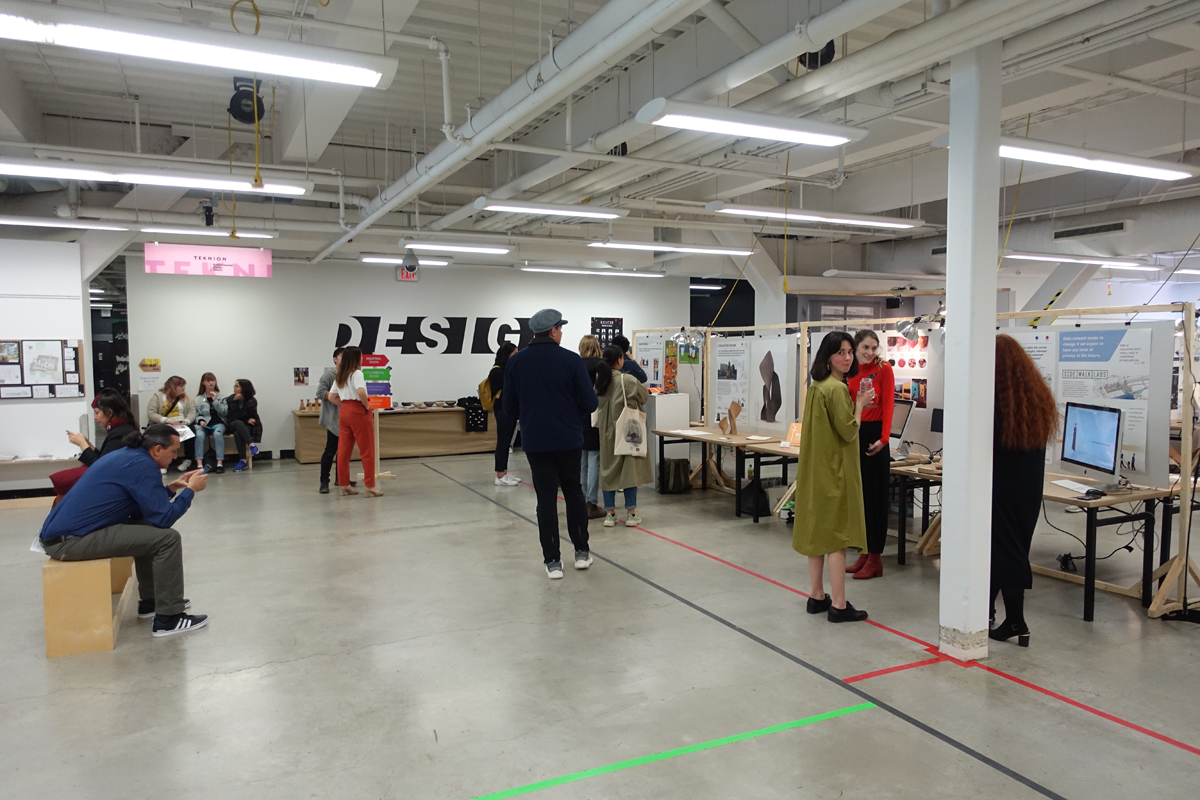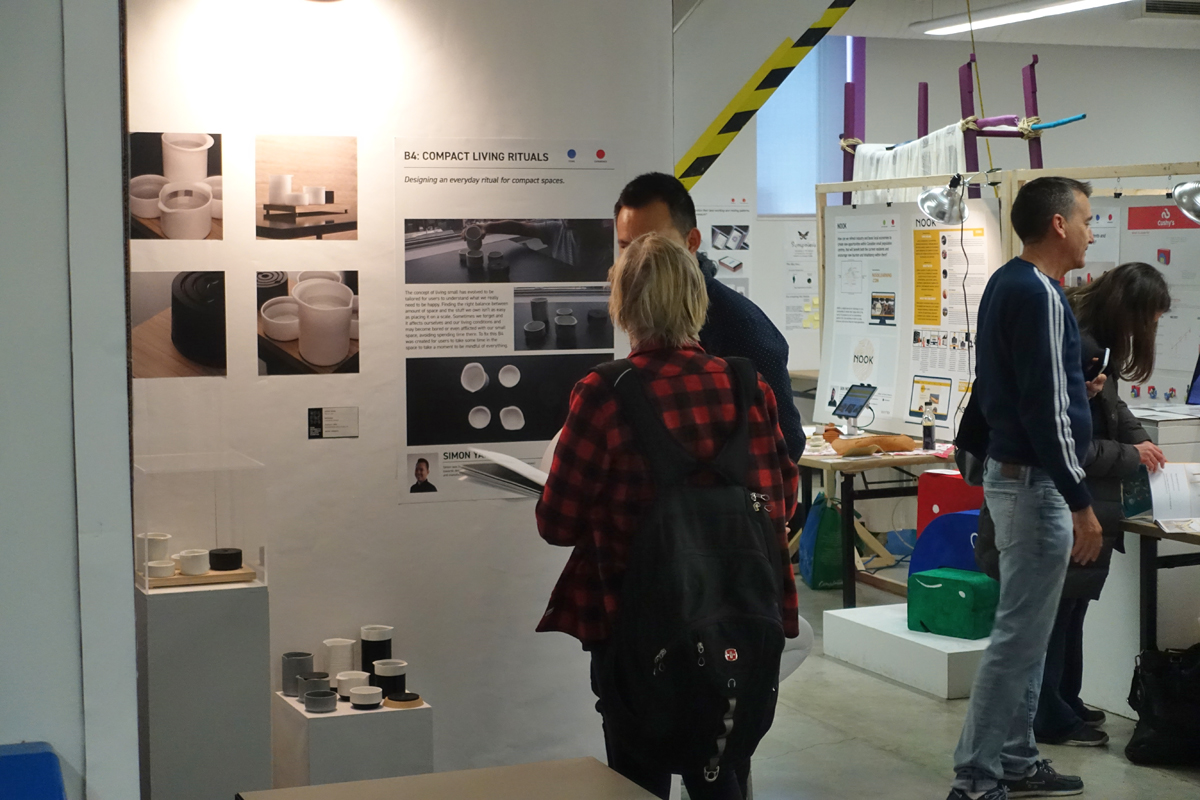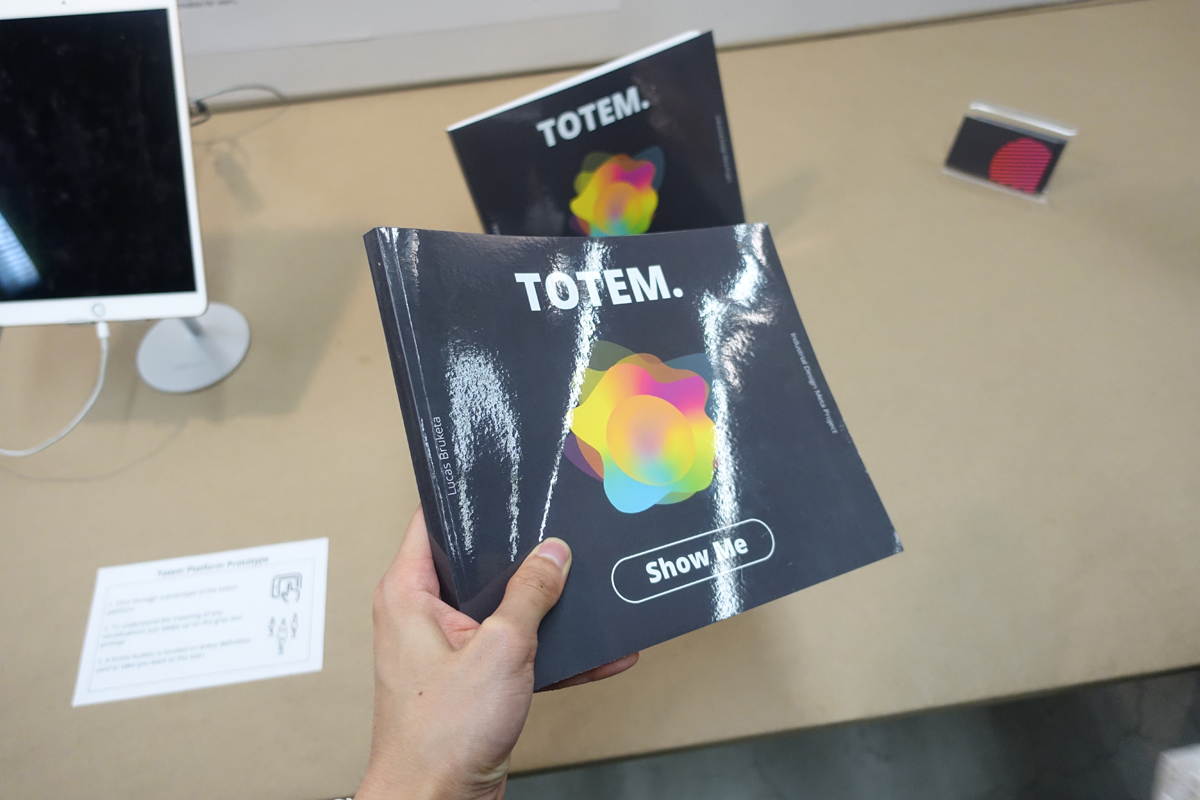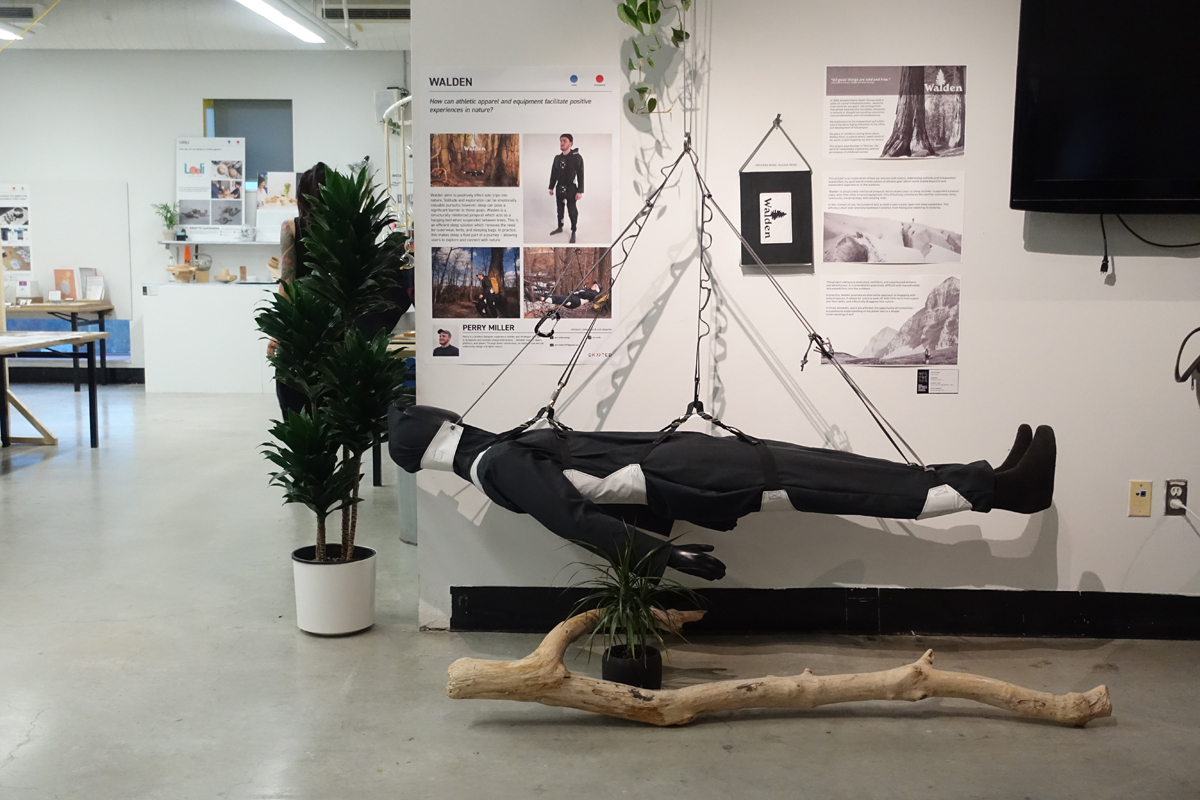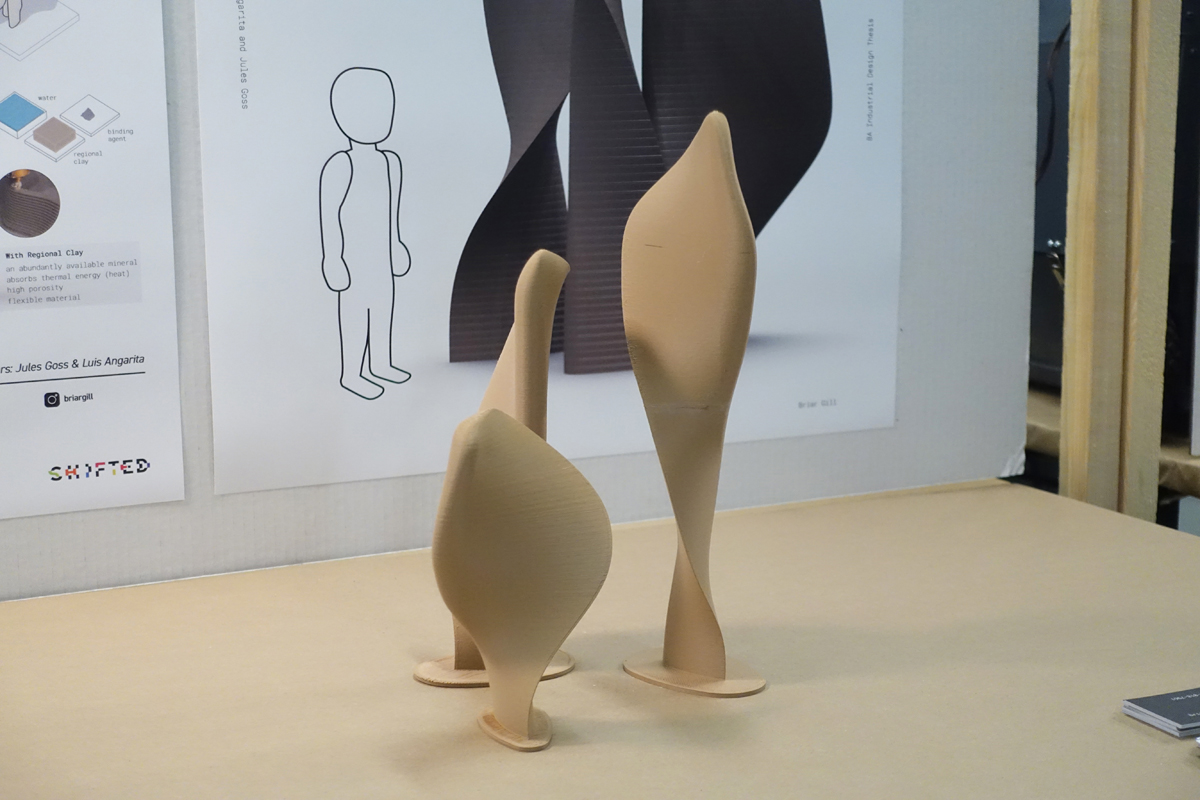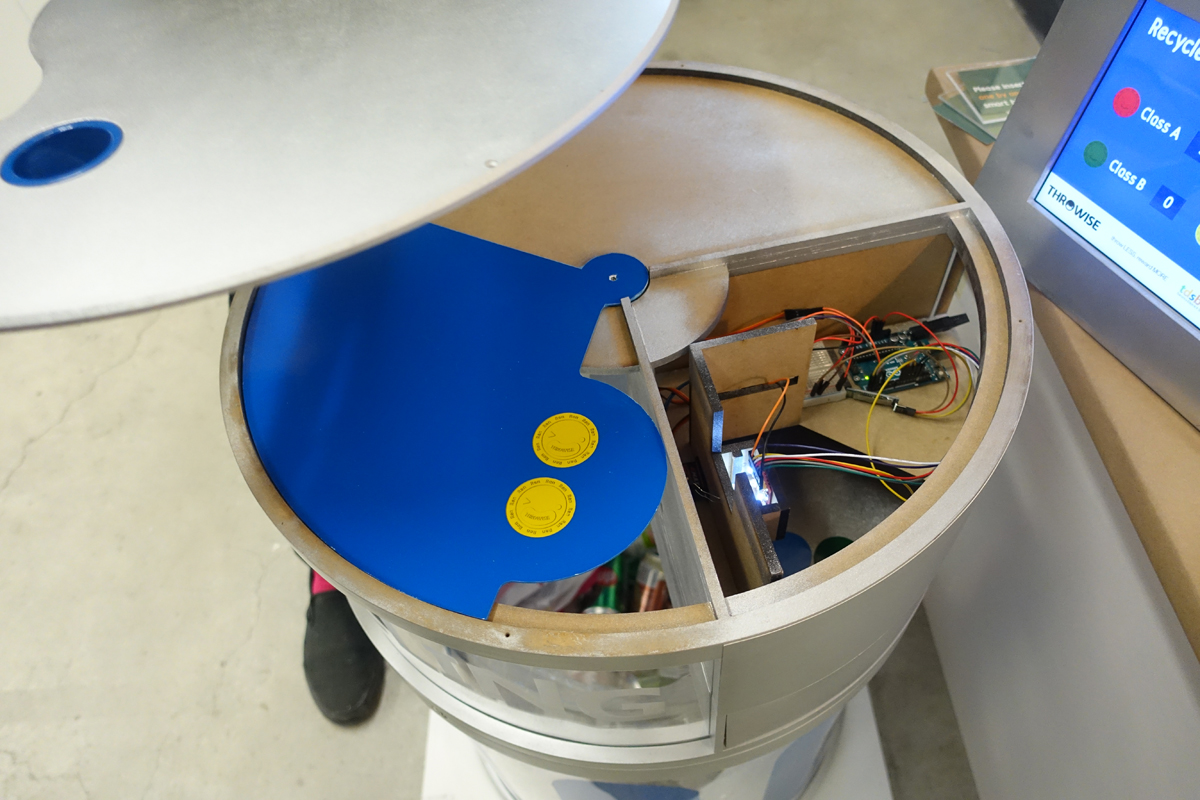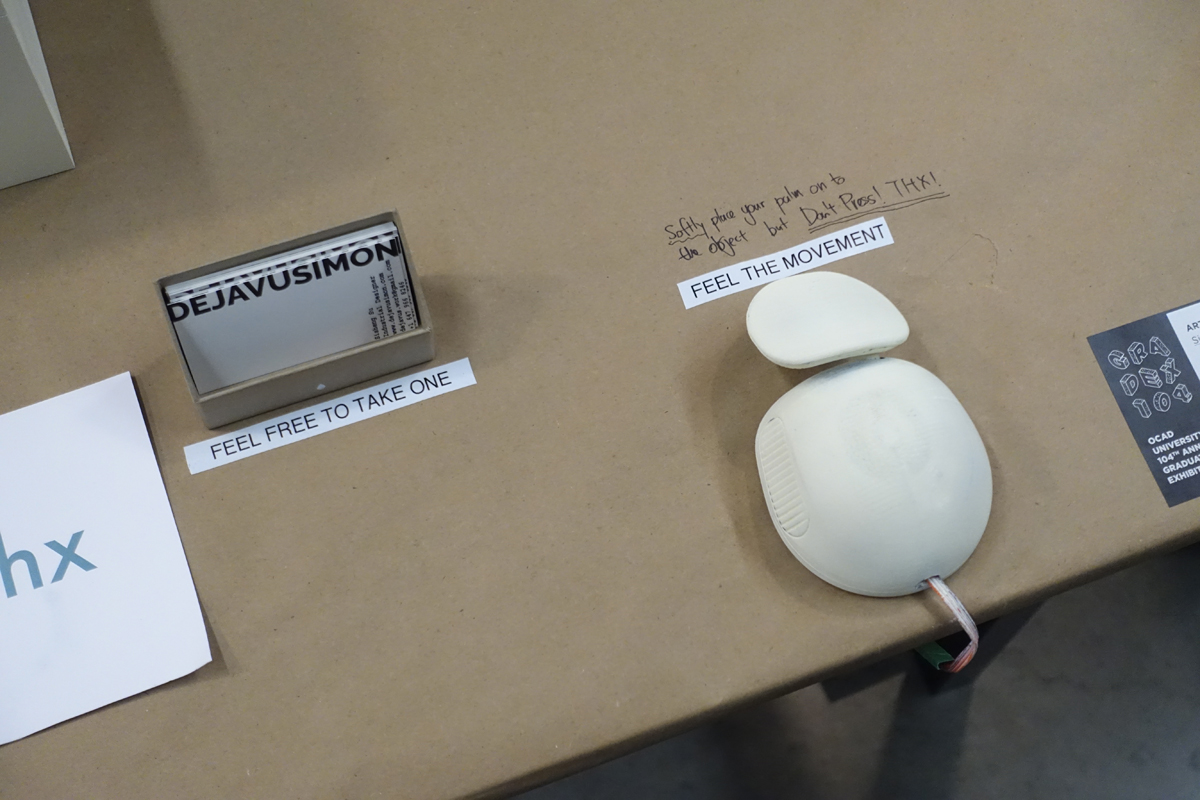GradEx 104 | 02
02 | Projects
I’m a little sad I wasn’t able to do my usual deep dive through every single ID project on the floor in the limited time I had back in town. On top of only having 3 days out of my usual 5 spent browsing the exhibition, this time I was also distracted catching up with anyone I hadn’t seen for the last few months.
This second post is for the few projects I actually ended up with photos of.
I’m never not happy seeing gridded dots.
The way this display was set up really stood out to me. It’s a good way to add annotations over something that can look very confusing.
The clear vinyl sticker draws leading lines from the prototype circuit components to their corresponding place in a final render.
This is a really smart idea and I’m totally going to do this for my thesis set up.
Simon kept his ritual ceramic set in a display case for the most part, but if he was around he’d bring it out to show people.
The pockets in these furniture pieces create spots in common furniture to keep mobile devices separate from us so we can better self-regulate ourselves away from them.
You can spot the pocket built into the side table at the left edge of the photo, and the small indent in the one center left as well.
This project tackles waste created from food we forget about because it’s out of sight and out of mind by making the food we do have easily visible.
I liked the form on the ring clamp. It’s nice to see thought and effort put into something that’s not easily visible.
Lucas Bruketa wove philosophy and science together in order to lay the groundwork for his thesis.
He created a series of working Snapchat AR filters allowed visitors to experience his thesis in the space around them.
I’m not the biggest fan of conflating philosophy with the natural sciences, but I do appreciate how these blob 3D visualizations are pretty much radar charts (I know them as Pokemon stat graphs) on steroids.
This full body jump suit and sleeping bag all-in-one is pretty wacky and comes from the mind of Perry Miller.
It’s meant to make sleep a seamless part of solo exploring.
The stitched on fabric on the front of his process book is super cool though.
Vessell is a puffer jacket where each individual “puff” is actually a transparent pocket that the consumer can switch the insulation in and out of, to adapt to different temperatures and curb clothing consumption, while also cultivating a personal aesthetic. I think there’s a lot that can be said about the efficacy of the solution (just how many clothes will owning just this one eliminate), especially if you can only wear this for part of the year, but it does draw attention to a problem with fast fashion culture.
Recycling is a problem that’s near and dear to me since it angers me to no end to see people contaminate bins with items that don’t belong. I believe it’s a problem that requires large scale policy change for any meaningful impact, but Joyce reduced the scope and scale of the issue by choosing to tackle this problem strictly in a university context. By creating a family of anthropomorphized common waste items and matching them with cutouts placed above the bins, her thesis trains and reinforces students to remember what belongs in which bin.
I really admire the premise of Briar’s project, which is predicated on the inevitability of climate change—rather than focus her thesis on something that tries and will ultimately fail to prevent it, she’s resolved to design for a world where a few degrees of global temperature increase is certain. The muted look of the 3D print, meant to mimic clay, is actually a clever use of wood filament. If it was printed at a lower resolution it actually might’ve worked out looking like it was to scale.
Friedrich’s project approaches the recycling/waste problem within the confines of elementary schools, and aims to teach children by assigning points to different types of waste, gamifying the experience and creating competition between classes. The mouth swings open after dropping in a few tokens) and super cool to see in action.
I got a peek at the internals when he was making some adjustments.
Motus is basically what you would get if you looked at a Ruffles chip and thought it would make a nice mouse. Simon Su’s project adds an element of movement to something that would otherwise remains stationary in your hand by slowly rotating the part of the mouse where your index and middle finger rest to decrease repetitive strain injuries.
He had working models that cycled through having the buttons flat and at an angle.
I really like wavy surface, but how it fits with the rest of the mouse I think is something that could be more resolved. I think this is fairly reflective for most of the form development that comes out of my school.
There isn’t really any expectation to excel in CAD or rendering at my school, so I was really impressed with what Luca had for his project, especially with this packaging render. Excellent work.
He had a completely functional prototype too!
Last but not least, Sony’s Mimo project was one of my all time favourites from the show, and also the medal winner for the Industrial Design program. I took so many photos of it I’ll be doing a post just about it on it’s own.
